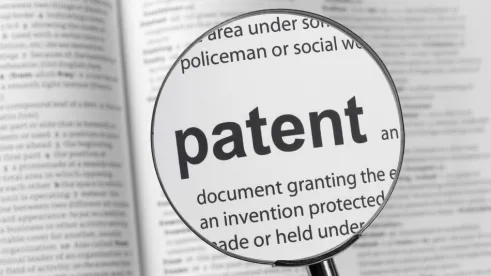In its Final Written Decision, the Board found Petitioner had shown by a preponderance of the evidence that challenged claims 1, 2, 6, 7, 10, 11, 16, 17, 21, and 22 of the ‘981 patent are unpatentable, “but has failed to do so for claims 3-5 and 12-15.” The Board further dismissed the Petition with respect to claims 18-20 for improper dependency. The ‘981 patent “is directed to methods and systems for seismic surveying, including firing at least two energy sources in multiple firing sequences.”
The Board dismissed the Petition with respect to claims 18-20 because the claims failed to indicate the scope of the invention. The Board sua sponte “observe[d] that claims 18 and 19 do not further limit the claims from which they depend.” See 35 U.S.C. § 112, ¶ 4. “Under Novo Industries, L.P. v. Micro Molds Corp., 350 F.3d 1348 (Fed. Cir. 2003), we would be permitted to correct the deficiencies in the recited dependencies in claims 18 and 19 if we could make the correction in a manner that was not subject to reasonable debate.” However, the Board noted that making such a correction here “would be subject to reasonable debate,” and therefore “we cannot correct the improper dependency recited in either of claims 18 or 19.” Thus, “the claims fail to meet the requirements of 35 U.S.C. § 112, ¶¶ 2, 4” because they “fail to indicate the scope of the claimed invention.” As such, the Board did “not attempt to apply the asserted prior art” to the claims and dismissed the Petition with respect to Petitioner’s challenges to claims 18-20.
The Board went on to find certain claims unpatentable and not unpatenable under 35 U.S.C. § 102. The Board rejected Patent Owner’s argument that the prior art did not enable the selection of a distance between sources because “such an argument is not commensurate with the scope of the claim.” The “towing” step merely requires towing the second source a selected distance from the first source, and no step of selecting a distance is affirmatively recited. The Board further agreed with Petitioner that the prior art discloses as much as the ‘981 patent does regarding the “selected distance” between sources, particularly in light of Patent Owner’s declarant’s testimony that the two sources need only be “within a reasonable range.” Thus, the Board found by a preponderance of evidence that claim 1 of the ‘981 patent is anticipated. Petitioner’s arguments and evidence, however, failed to persuade the Board that the prior art disclosure of suppressing random noise inherently includes determining trace to trace coherence. “Merely demonstrating a step may be done is not sufficient to show that step is inherently anticipated.” Thus, the Board found that Petitioner failed to demonstrate, by a preponderance of the evidence, that claims 12 and 17 (and claims 13-15 by dependency) were anticipated.
The Board went on to find certain claims unpatentable and not unpatenable under 35 U.S.C. § 103. “Because the parties acknowledge that encoding and decoding schemes are intertwined, it follows that an ordinarily skilled artisan would have understood the ramifications of using any known encoding/decoding scheme and the need to use complementary encoding and decoding schemes.” Thus, the Board was persuaded “that a person having ordinary skill would have used time-aligning signals, as taught by [the prior art], as a type of decoding without needing to take multiple shots from the same source” and so “a person having ordinary skill would have been able to decode a signal for a given encoding scheme.” On the other hand, the Board found “that disclosure of [the prior art] merely teaches it is possible to compensate for undesired random variations and does not teach varying a time delay randomly or quasi-randomly, as recited in claims 3 and 4” and that “the evidence of secondary considerations submitted by Patent Owner discussing the import of using random or incoherent variations supports a finding of nonobviousness.” Thus, the Board found that “Petitioner has not demonstrated, by a preponderance of the evidence, that claims 3 and 4 would have been obvious.”
Finally, the Board rejected Patent Owner’s evidence of secondary considerations of nonobviousness with regard to claim 1. “We agree with Petitioner that Patent Owner has not demonstrated sufficiently a nexus between the secondary considerations and the alleged novelty of claim 1.” First, “time delay encoding for seismic surveying existed prior to the ‘981 patent.” Second, “the majority of the evidence cited by Patent Owner focuses on the randomness of the time delays, not just the use of time delays generally.” Thus, “Patent Owner has not presented persuasive evidence or analysis linking the claims at issue with the alleged ‘long-felt but unmet need, industry praise, and copying.’”
WesternGeco, L.L.C. v. PGS Geophysical AS, IPR2015-00309
Paper 42: Final Written Decision
Dated: June 8, 2016
Patent: 6,906,981 B2
Before: Justin Busch, Mitchell G. Weatherly, and Beverly M. Bunting
Written by: Busch
Related Proceedings: IPR2015-00310, -00311; WesternGeco LLC v. Petroleum Geo-Services, Inc., C.A. No. 13-2725 (S.D. Tex.).



 />i
/>i
